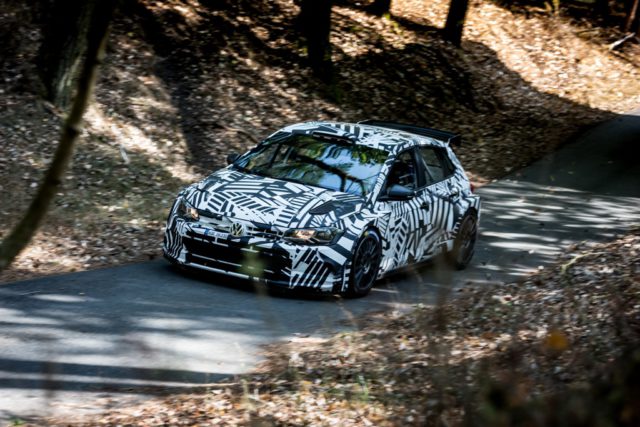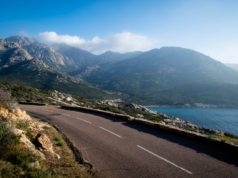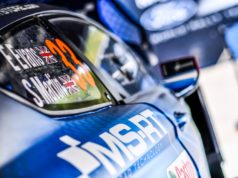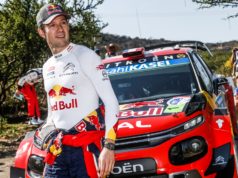As a race engineer, he guided Sébastien Ogier to four titles in the World Rally Championship (WRC) between 2013 and 2016. Nowadays, Dutchman Gerard-Jan de Jongh is responsible for the Polo GTI R5 in his role as project leader at Volkswagen Motorsport. The 200-kW (272-PS) rally car will, in the future, be run by professional teams in the FIA World Rally Championship, interregional series like the FIA European Rally Championship, and national championships. In an interview for the Volkswagen Motorsport press office shortly before the planned homologation on 1 October, 40-year-old de Jongh describes the challenges of the R5 regulations. The engineer also gives an overview of the development steps behind the Polo GTI R5 and looks ahead to the car’s competitive debut at the Rally Spain at the end of October.

Mr. de Jongh, for several years you were Sébastien Ogier’s race engineer at Volkswagen Motorsport. Do you miss the competitive outings?
My role as project leader for the development of a completely new rally car is obviously very different. I had the opportunity to continue to work as a race engineer, but found this new challenge at Volkswagen Motorsport very appealing. My job was suddenly far more complicated and complex than before. I am pleased that I took on this challenge.
When did you start to develop the Polo GTI R5?
In the week after the Rally Australia in November 2016, the last world championship event for the WRC team at the time. I started as soon as I got back to my office. The idea came from François-Xavier Demaison, Technical Director at Volkswagen Motorsport.
Demaison is known as a perfectionist. How heavily involved was he in your work?
FX (Demaison’s nickname – Ed.) is currently responsible for four different projects. Despite this, he has still been very heavily involved in the development of the Polo GTI R5, right from the word go. We have had weekly meetings from the outset, at which we have discussed the further development of the car. FX is one of the most experienced engineers in rallying. His backing really helped me and the whole development team.
What form did the first steps take in the development of the Polo GTI R5?
I first thought about the basic concept of the Polo GTI R5, after which we came up with a design briefing. The next task was to find the right suppliers for the car components that are not made at Volkswagen Motorsport. In this regard, we were able to turn to a whole string of reliable contacts, with whom we worked on the Polo R WRC. They include Xtrac for the gearbox, Bosch for the engine electronics, ZF Sachs for the shock absorbers, and Alcon for the brakes.

How big was the team that developed the Polo GTI R5?
At Volkswagen Motorsport, we have design teams for the chassis, engine and suspension, each consisting of three to six employees. The work was divided between the team members. I was mainly in contact with the heads of department, but also with the designers. Experience has shown me that there is nothing better than personal contact.
What were the basic parameters for the development of the Polo GTI R5?
It was clear that the Polo GTI R5 had to be based on the 2017 generation of the production car. However, the new sixth generation Polo was not yet available when we started to develop the rally car. For this reason, we had to work exclusively with computer data. Thanks to the computer simulation, we had the chassis ready relatively early on in proceedings. We were then able to work with that in the wind tunnel. When defining the specification, we also placed great importance on ensuring that it was possible for private teams to look after the technical side of the Polo GTI R5 without any problems.
How many components were you able to adopt from the Polo R WRC?
Hardly any at all, because the technical regulations are completely different and the Polo R WRC was based on the previous model. However, we did adapt the design philosophy. For example, the mounting position of the shock absorbers, the spring deflection, the geometry of the suspension, and the position of the driver’s seat are similar. Exactly as we did with the Polo R WRC, we strived to make every single component as light as possible. The aim was to keep the car’s centre of gravity as low as possible. Here too, however, we were restricted by the regulations. Price limits are specified for many parts and a minimum weight is often stipulated – for the bodyshell, for example.
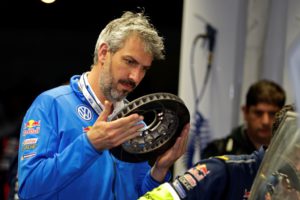
The International Automobile Federation FIA specifies a fixed budget for R5 cars …
… and sticking to this budget with an R5 car like the Polo GTI R5 actually represents a major challenge. It would obviously be possible to build a more effective car within the framework of the technical regulations. However, that would be too expensive and would have to come at a sacrifice. That is out of the question for our company and would not be in the interest of the sport. We have gained similar customer sport experience in touring car racing with the Golf GTI TCR. We were able to build on that for the R5. Furthermore, the regulations stipulate the use of production parts in certain areas, including the steering, radiator, drive shafts, cardan shaft and the engine.
Where did you have to make compromises?
Weight is a big issue with any racing car. As a rule, however, the lighter a part is the more expensive it is. As such, I had to make sure that the suppliers, with whom we wanted to cooperate, understood that we would have to find a compromise between performance and cost. Let’s take a part of the suspension, for example. In simple terms, we designed 90 per cent of the part. We then took this design to the potential suppliers and asked them what price they would be able to supply the part for? The important thing was the quantity. We sometimes only needed a handful of the components for the Polo R WRC. In the case of the Polo GTI R5, which is designed for customer sport, we are talking about 50, 100 or even more parts. That obviously has a big influence on the price.
1.6-litre turbo engines are required in the R5 class. However, the production version of the Polo does not have this kind of engine …
The regulations do give us more leeway in this regard. The rules state that the rally car’s engine must stem from one of the group’s production models. We opted for the engine with the internal code EA888, a similar form of which, with a two-litre displacement, is also installed in the new Polo GTI. It was then modified accordingly for the Polo GTI R5.
How long have you been testing with the Polo GTI R5, and which drivers were involved in the tests?
The first test took place in November 2017 at the test facility in Fontjoncouse, France. Since then, Volkswagen test and development driver Dieter Depping, Pontus Tidemand, former world rally champions Petter Solberg and Marcus Grönholm, Raimund Baumschlager, Eric Camilli, and Emil Lindholm have all driven the car. The test programme was demanding: temperatures ranged from – 16°C to +40°C and the testing took place at sea level and at 2,800 metres in the mountains. We tested in such varied conditions, in order to ensure that our customers receive a car that performs reliably at all times and everywhere.
We also wanted to gauge the opinion of drivers with different driving styles, as well as asphalt and gravel experts. The Polo GTI R5 must be versatile and driveable by the widest possible range of drivers. In total, we will have completed about 10,000 test kilometres by the time the car makes its competitive debut. Roughly half of those were on gravel and half on asphalt, as well as a few on snow and ice.
The Polo GTI R5 will make its competitive debut at the end of October at the Rally Spain, the penultimate round of the FIA World Rally Championship. What are your expectations?
We will run two Polo GTI R5s, in order to show the potential of the car. The goal is to demonstrate how competitive the new Polo GTI R5 is at the highest level and on different surfaces. The Spanish round of the world championship is particularly well suited to this. It is the only one held on both asphalt and gravel. However, we are well aware, from our time with the Polo R WRC in the FIA World Rally Championship, that good planning does not guarantee good results – particularly in rallying. We would be pleased with a good result in WRC2.
In Eric Camilli and Petter Solberg, Volkswagen will have two experienced drivers at the wheel of the Polo GTI R5 at the Rally Spain. Why did you choose these two?
Eric Camilli and his co-driver Benjamin Veillas played a key role in the development of the Polo GTI R5. Both have a wealth of experience in the WRC2 class of the FIA World Rally Championship. They finished runner-up in 2017. For them to be involved in the competitive debut of the Polo GTI R5 is the logical next step. Plus, we really value their detailed feedback and analytical approach. Petter Solberg was also involved in the development of the Polo GTI R5. He is one of the most experienced rally drivers in the world and his knowledge is a big plus for any team. Furthermore, he is associated with Volkswagen Motorsport through his team’s commitment in the FIA World Rallycross Championship (WRX). It is a special honour and great to have him driving the Polo GTI R5 at the Rally Spain.
Things you can do in 30 days? Earn a month’s salary. Spend a year’s holiday. Learn another language. Work-out to the max …
But whatever you’ll do: In 30 days you’ll have to be back and follow us at @RallyRACC and the #competitive #debut of the #Polo #GTI #R5.
Promised? pic.twitter.com/Xco3s9i6UA
— VolkswagenMotorsport (@volkswagenms) September 25, 2018






















